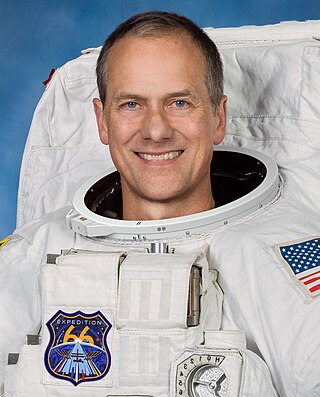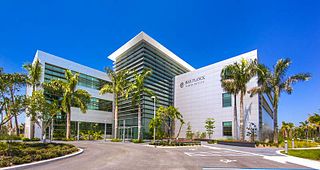Early life and career
He was born at Jhulasan, Mehsana District, Gujarat in India. He was orphaned but completed his I.S. in 1953 from Gujarat University in India. After obtaining his M.D. degree from Gujarat University in 1957 (and interning in V.S. Hospital in Junagadh till 1958), he went to the United States and did his internship and residency training in Medicine in Cleveland, Ohio. He was then married to Slovene American Ursuline Bonnie (Zalokar) Pandya, who resides in Falmouth, Massachusetts.
In 1964, Pandya joined the Department of Anatomy at Case Western Reserve University, as a postdoctoral fellow. He moved to Boston in 1966 and joined the Aphasia Research Center at the Boston Veterans Administration Medical Center, and the Departments of Anatomy and Neurology at Boston University School of Medicine as an Assistant Professor. During his postdoctoral fellowship and subsequent period in Boston, Pandya focused his research investigations on cortico-cortical connections. In 1969 his laboratory moved to Boston City Hospital. During this time he was appointed a lecturer in Experimental Neuropathology at Harvard Medical School, and he participated in teaching the Neuroscience course at both schools. In 1973, Pandya joined the Veterans Administration Medical Center in Bedford, Massachusetts, as a staff internist. He practiced clinical medicine while continuing his research studies and teaching, until his retirement in 1995. After this, Pandya moved his office to the Department of Anatomy & Neurobiology at Boston University School of Medicine. [2]
Margaret Stratford Livingstone is the Takeda Professor of Neurobiology in the Department of Neurobiology at Harvard Medical School in the field of visual perception. She authored the book Vision and Art: The Biology of Seeing. She was elected a member of the American Academy of Arts and Sciences in 2015 and was elected to the National Academy of Sciences in 2020.

The Tufts University School of Medicine is the medical school of Tufts University, a private research university in Massachusetts. It was established in 1893 and is located on the university's health sciences campus in downtown Boston. It has clinical affiliations with numerous doctors and researchers in the United States and around the world, as well as with its affiliated hospitals in both Massachusetts, and Maine.

Sunita Lyn Williams, nicknamed Suni in the United States and Sončka in Slovenia, is an American astronaut, United States Navy officer, and former record holder for most spacewalks by a woman (seven) and most spacewalk time for a woman. Williams was assigned to the International Space Station as a member of Expedition 14 and Expedition 15. In 2012, she served as a flight engineer on Expedition 32 and then commander of Expedition 33.
Anirvan Ghosh is an American neuroscientist and Biotech executive.

Robert Lee "Bobby" Satcher Jr. is an American orthopedic surgeon, chemical engineer, and former NASA astronaut. He participated in two spacewalks during STS-129, accumulating 12 hours and 19 minutes of extravehicular activity. Satcher holds two doctorates and has received numerous awards and honors as a surgeon and engineer.

Thomas Henry Marshburn is an American physician and a former NASA astronaut. He is a veteran of three spaceflights to the International Space Station and holds the record for the oldest person to perform a spacewalk at 61 years old.

Michael Reed Barratt is an American physician and a NASA astronaut. Specializing in aerospace medicine, he served as a flight surgeon for NASA before his selection as an astronaut and has played a role in developing NASA's space medicine programs for both the Shuttle-Mir Program and International Space Station. His first spaceflight was a long-duration mission to the International Space Station, as a flight engineer in the Expedition 19 and 20 crew. In March 2011, Barratt completed his second spaceflight as a crew member of STS-133. Barratt pilots the SpaceX Crew-8 mission that launched on 4 March 2024.

Pasko Rakic is a Yugoslav-born American neuroscientist, who presently works in the Yale School of Medicine Department of Neuroscience in New Haven, Connecticut. His main research interest is in the development and evolution of the human brain. He was the founder and served as Chairman of the Department of Neurobiology at Yale, and was founder and Director of the Kavli Institute for Neuroscience. He is best known for elucidating the mechanisms involved in development and evolution of the cerebral cortex. In 2008, Rakic shared the inaugural Kavli Prize in Neuroscience. He is currently the Dorys McConell Duberg Professor of Neuroscience, leads an active research laboratory, and serves on Advisory Boards and Scientific Councils of a number of Institutions and Research Foundations.

Boston University Chobanian & Avedisian School of Medicine (CAMED), formerly known as Boston University School of Medicine, is the medical school of Boston University, a private research university in Boston. It was founded in 1848. The medical school was the first institution in the world to formally educate female physicians. Originally known as the New England Female Medical College, it was subsequently renamed Boston University School of Medicine in 1873, then Chobanian & Avedisian School of Medicine in 2022. In 1864, it became the first medical school in the United States to award an M.D. degree to an African-American woman.

Dale Purves is Geller Professor of Neurobiology Emeritus in the Duke Institute for Brain Sciences where he remains Research Professor with additional appointments in the department of Psychology and Brain Sciences, and the department of Philosophy at Duke University. He earned a B.A. from Yale University in 1960 and an M.D. from Harvard Medical School in 1964. After further clinical training as a surgical resident at the Massachusetts General Hospital, service as a Peace Corps physician, and postdoctoral training at Harvard and University College London, he was appointed to the faculty at Washington University School of Medicine in 1973. He came to Duke in 1990 as the founding chair of the Department of Neurobiology at Duke Medical Center, and was subsequently Director of Duke's Center for Cognitive Neuroscience (2003-2009) and also served as the Director of the Neuroscience and Behavioral Disorders Program at the Duke-NUS Graduate Medical School in Singapore (2009-2013).
Eric L. Schwartz was Professor of Cognitive and Neural Systems, Professor of Electrical and Computer Engineering, and Professor of Anatomy and Neurobiology at Boston University. Previously, he was Associate Professor of Psychiatry at New York University Medical Center and Associate Professor of Computer Science at the Courant Institute of Mathematical Sciences at New York University.

Marcus E. Raichle is an American neurologist at the Washington University School of Medicine in Saint Louis, Missouri. He is a professor in the Department of Radiology with joint appointments in Neurology, Neurobiology and Biomedical Engineering. His research over the past 40 years has focused on the nature of functional brain imaging signals arising from PET and fMRI and the application of these techniques to the study of the human brain in health and disease. He received the Kavli Prize in Neuroscience “for the discovery of specialized brain networks for memory and cognition", together with Brenda Milner and John O’Keefe in 2014.

The Max Planck Florida Institute for Neuroscience (MPFI), is a research facility located in Jupiter, Florida. Its research focuses on brain function and neural circuits, using techniques to visualize microscopic molecular processes. It is the first institute established by the Max Planck Society in North America.

Azad Bonni is a Canadian and American neuroscientist of Kurdish origin. The focus of his research is to understand the mechanisms of neuronal connectivity in the brain. From October 2012 until June 30, 2019, he was the Edison Professor of Neuroscience and Chairman of the Department of Neuroscience at Washington University School of Medicine. As of July 1, 2019, he is SVP and head of neuroscience and rare diseases research and early development at Roche in Basel, Switzerland.

Daniel Mark Wolpert FRS FMedSci is a British medical doctor, neuroscientist and engineer, who has made important contributions in computational biology. He was Professor of Engineering at the University of Cambridge from 2005, and also became the Royal Society Noreen Murray Research Professorship in Neurobiology from 2013. He is now Professor of Neurobiology at Columbia University.
Jennifer S. Lund is a distinguished anatomist who provided insight and research to the organization of feedforward and feedback circuits in the neocortex, observed the pruning of dendritic spines in the primate visual system, and helped describe the patterns of lateral connectivity in the cerebral cortex.
Robert A. Stern is professor of Neurology, Neurosurgery, and Anatomy & Neurobiology at Boston University School of Medicine, where he is also director of clinical research for the BU Chronic Traumatic Encephalopathy (CTE) Center. From 2010 to 2019, he was the director of the Clinical Core of the BU Alzheimer's Disease Center.
Steven L. Small is the Aage and Margareta Møller Distinguished Professor in Behavioral and Brain Sciences at the University of Texas at Dallas, and dean of its School of Behavioral and Brain Sciences. Small is a specialist in the neurobiology of language.
David C. Van Essen is an American neuroscientist specializing in neurobiology and studies the structure, function, development, connectivity and evolution of the cerebral cortex of humans and nonhuman relatives. After over two decades of teaching at the Washington University in St. Louis School of Medicine, he currently serves as an Alumni Endowed Professor of Neuroscience and maintains an active laboratory. Van Essen has held numerous positions, including Editor-in-Chief of the Journal of Neuroscience, Secretary of the Society for Neuroscience, and the President of the Society for Neuroscience from 2006 to 2007. Additionally, Van Essen has received numerous awards for his efforts in education and science, including the Krieg Cortical Discoverer Award from the Cajal Club in 2002, the Peter Raven Lifetime Achievement Award from St. Louis Academy of Science in 2007, and the Second Century Award in 2015 and the Distinguished Educator Award in 2017, both from Washington University School of Medicine.
Stephen Gates Lisberger is an American neurobiologist. He is the George Barth Geller Distinguished Professor for Research and chair of Neurobiology at the Duke University School of Medicine.











